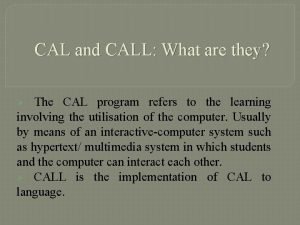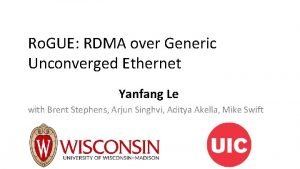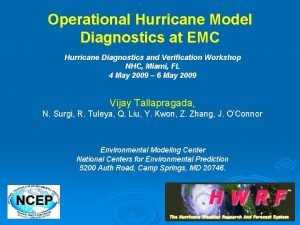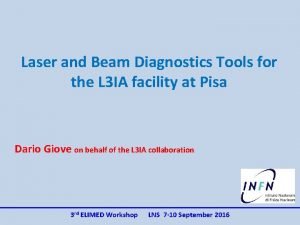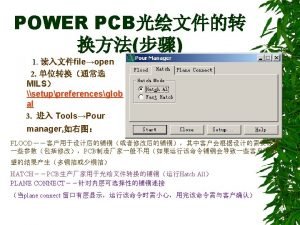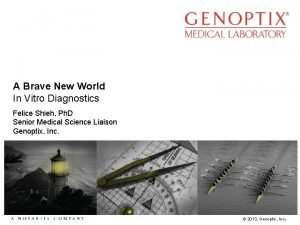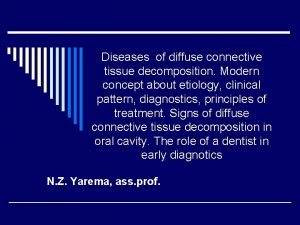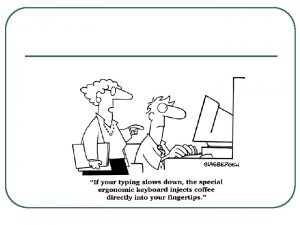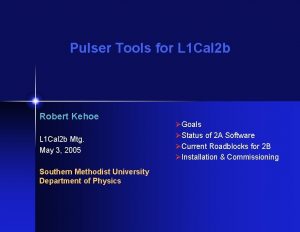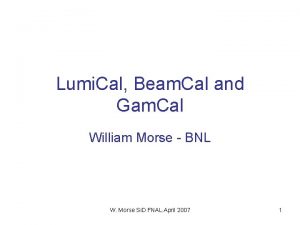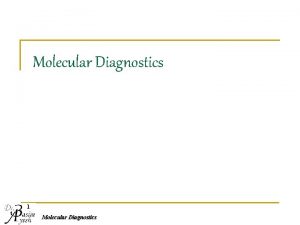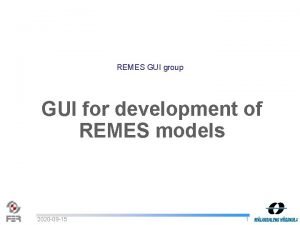L 1 Cal Pulser Diagnostics GUI What it










- Slides: 10

L 1 Cal Pulser Diagnostics GUI.

What it is for and why do we need it. • See a beautiful Bob’s presentation. – To carry out diagnostics for Run 2 A trigger (especially during shutdown) – To help in installation. • Why not L 1 Cal. Examine? With L 1 Cal examine: – One depends on the presence of beam. – Low statistics. – One can not control which regions of the trigger to study. • Conclusion: Should use both to perform a diagnostics.

What do we do? • When there is a beam, run L 1 Cal examine. • When there is no beam, take L 1 Cal Pulser runs immediately after the store is over (after the pedestal run). • Especially important durung the shudown, when there is no beam. • Perhaps, a shifter can do diagnostics: – Since the program is extremely easy to run. – I plan to create extremely friendly help. – Since one should use just this program to make a study and nothing else.

What was done. • The trigger information was unpacked by Rahmi Unalan. – Give very detailed information on each tower: Et, RMS, taking average over 100 events. – Moreover, tells what Trigger Towers were supposed to be fired, what precision Towers were supposed to be fired, and depth information. • The run was taken with 32 Run. I Pulser patterns, which give very detailed information on trigger.

How the GUI looks. One should set the run number, then unpack the pulser and produce the input for the GUI

What do we want? • To test trigger means (zeros order): – Pedestal: • Consider Trigger Towers which should not be fired by the Pulser, but show pretty high Et (in our case higher then 3 Ge. V). We call them ‘hot’ • Consider Trigger Towers which should not be fired by the Pulser and show Et much lower, then the pedestal (in our case less than 1. 5 Ge. V). We call them ‘low’ – Fired trigger towers: • Consider Trigger Towers which should be fired by the Pulser, but show prettylow Et (in our case higher less then 3 Ge. V). We call them ‘dead’ – Moreover, we want it for both EM and Hadronic depths. – We want to get eta-fi map, which gives you info on all problematic TT. – Click on such a tower should result in the detailed information on this ‘sick’ tower.

Info on Em dead. High eta problems – increase DAQ to fix the problem.

Information on hadronic part: have some problems.

Several tests were carried out. • Dan gave to me the list of all excluded towers. – Pulser GUI sees ALL of THEM! – Actually, it sees even more (three more for EM). Should check with Dan. • Comparisons to L 1 Cal examine. – There were some difficulties digging out the info out of L 1 Cal examine – it produce the binary output. – Now fixed – checked for EM – looks fine.

What now? Plans for the future. • 07. 20 PULSER diagnostics GUI 1. 00 with problems resolved online. See, try, comment! – – – • • – In the way how it looks now – quantitative. Added BLS coordinates map. Good validation with examine. Continuously talk to Dan, Norm, Dean – get their comments. Nothing can be broken by shifters, so they can play. 08. 15 PULSER diagnostics GUI 2. 00. More Quantitative – – If the tower is hot, then how hot is it? If the tower was supposed to be fired, is it fired with right Et? – need some reference Ets. Check the references. Perhaps begin calibration – – – Calibration L 1 Cal Run. IIb unpacker -> GUI Look at shapes, timing issue. Later till shutdown:

